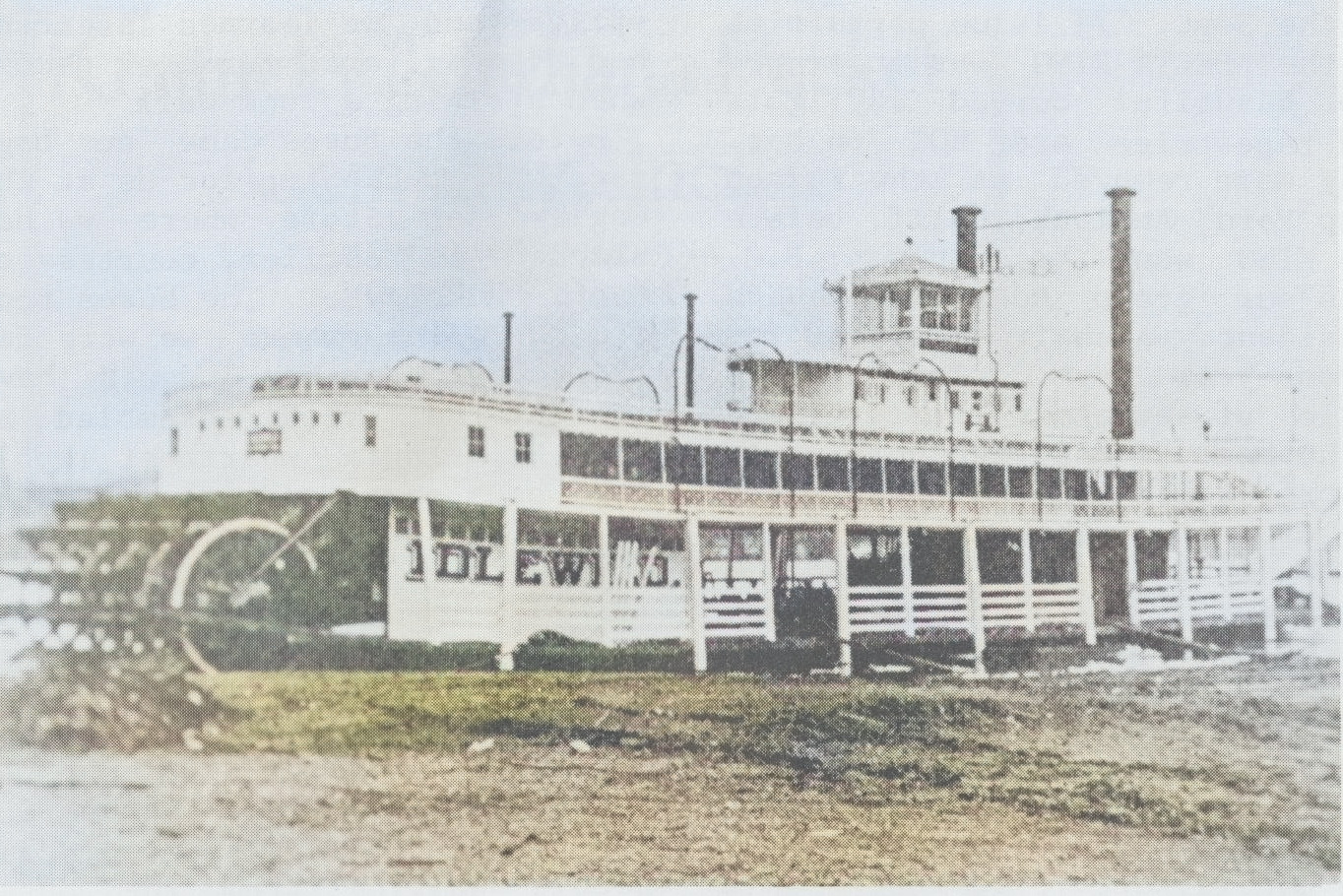The James Rees and Sons Company of Pittsburgh began building river craft in the late 1870s. They turned out a wide range of vessels including packets, towboats, snag boats and small tugs. In 1914, they built a relatively small steamboat to be used as a ferry and day packet in the Memphis, Tenn., area, which is featured in this column. Four years later in 1918, they built a towboat for the Pittsburgh pools. Remarkably, both vessels still exist today. The 1914 vessel is still in operation today as the much-loved Belle of Louisville, and the 1918 towboat is the W.P. Snyder Jr., now a museum at Marietta, Ohio.
On October 18, 1914, Rees launched the boat for Memphis, and according to Capt. Fred Way, it was the last packet style boat built there. It was sternwheel with a steel hull that was 157.5 feet by 36 feet, with a 5-foot depth. The Rees-built engines came used and were 16’s with a 6.5-foot stroke rated 400 hp., and the vessel had three boilers. The new vessel had a trim, traditional steamboat look with a full main and boiler deck, then a small texas cabin with pilothouse above. Twin smokestacks rose forward. The pilothouse had a domed roof, and at the starboard side was a three-chime whistle.
The owner was the West Memphis Packet Co. The boat, named Idlewild, departed Pittsburgh on January 9, 1915, and worked in the Memphis area as a ferry, day packet and excursion boat until it was sold to the New St. Louis & Calhoun County Packet Company of Hardin, Ill., in 1928. This company utilized the boat primarily in the excursion trade, and over time the texas roof was extended and cabins enclosed. It tramped the river system, going from town to town, but in the 1930s it spent lengthy periods at Louisville, Ky., at times delivering people from Louisville to the popular Rose Island amusement park at Charlestown, Ind.
During the colder months, rather than lay the boat up for the winter, the company would solicit towing jobs for the boat, so operating as a towboat can be added to the list of attributes of this historic craft. Many publications have stated the boat “towed oil barges during World War II,” but the issues of The Waterways Journal during the 1930s have the Idlewild mentioned in news columns and stories as it performed various towing jobs. The owners of the boat placed regular ads in the WJ during the off season as the New St. Louis & Calhoun Packet Corp.
The October 11, 1930, issue of the WJ carried one of these small ads on page 14. It stated in part, “TOWING, By Day or Contract, ALL STEEL STEAMER, New St. Louis & Calhoun Packet Corp., Write, Phone or Wire HENRY C. MEYER.” On page 7 of this same issue was detailed one of the towing adventures of the Idlewild. Across the top of the page was the only photo that this writer has ever seen of the boat being utilized as a towboat. Below the photo was stated: “The all-steel steamer Idlewild, now engaged in general towing, upon arrival in St. Louis on September 26 from the mouth of White River, Ark., with a tow of 16 pieces for the Missouri Valley Bridge and Iron Company to be used in constructing the new Wabash Railway bridge at St. Charles, Mo., across Missouri River. In White River the equipment was used in constructing the new Arkansas highway bridge at Clarendon.”
At the point where the boat was photographed, the Idlewild had shoved up some 356 river miles and had 43 more miles to the bridge site at mile 27 on the Missouri River. The Missouri Valley Bridge and Iron Company had been in business since 1874 and had built many bridges throughout the country. Later, during World War II, it would establish shipyards at Evansville, Ind., and Leavenworth, Kan. The Evansville yard would close after the war, but the Leavenworth yard would continue for years building vessels as Missouri Valley Steel. The new Wabash bridge would be constructed to replace an older structure upstream at St. Charles. Core drilling for the new bridge had taken place in 1929. The bridge opened in 1936.
The Idlewild would continue to work as a tramp excursion steamer during the warmer months and return to serving as a towboat when the weather turned colder. By 1934, the ads placed for towing had changed somewhat. A February 11, 1934, issue of the WJ advertised “TOWING” with an “ALL STEEL STEAMER – 650 H.P.” even though the boat has always been listed at 400 hp. Below that, the statement “Depression Charges” presumably reflected reduced rates due to the national financial crisis.
The next Old Boat Column will continue to detail the history of this floating treasure, the Idlewild, that has steamed into the hearts of so many over the past 110 years.




